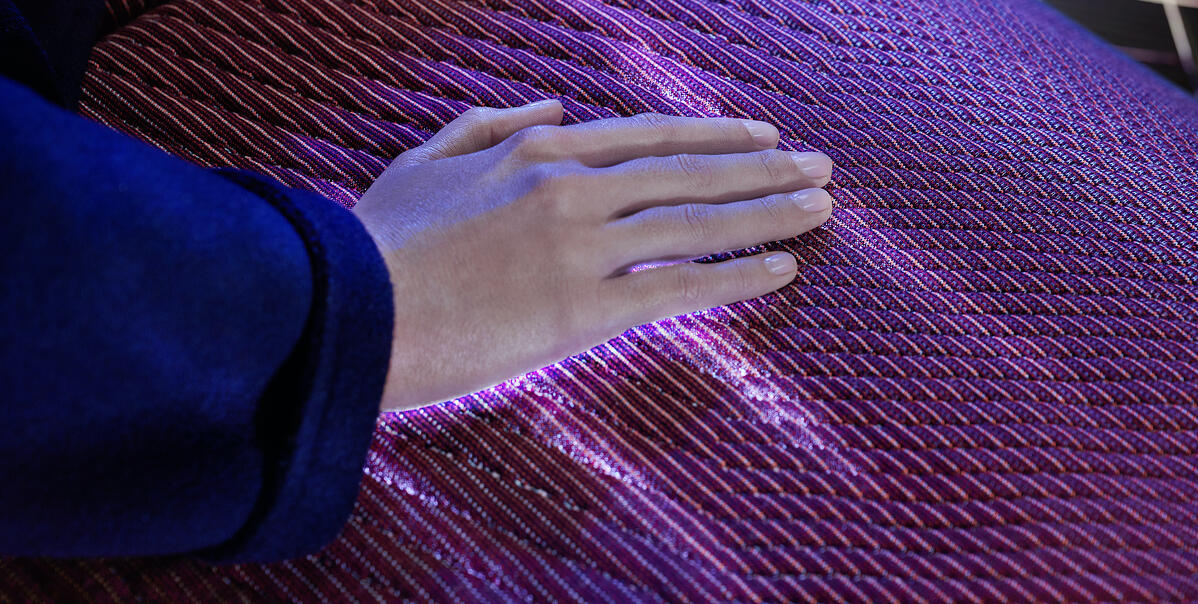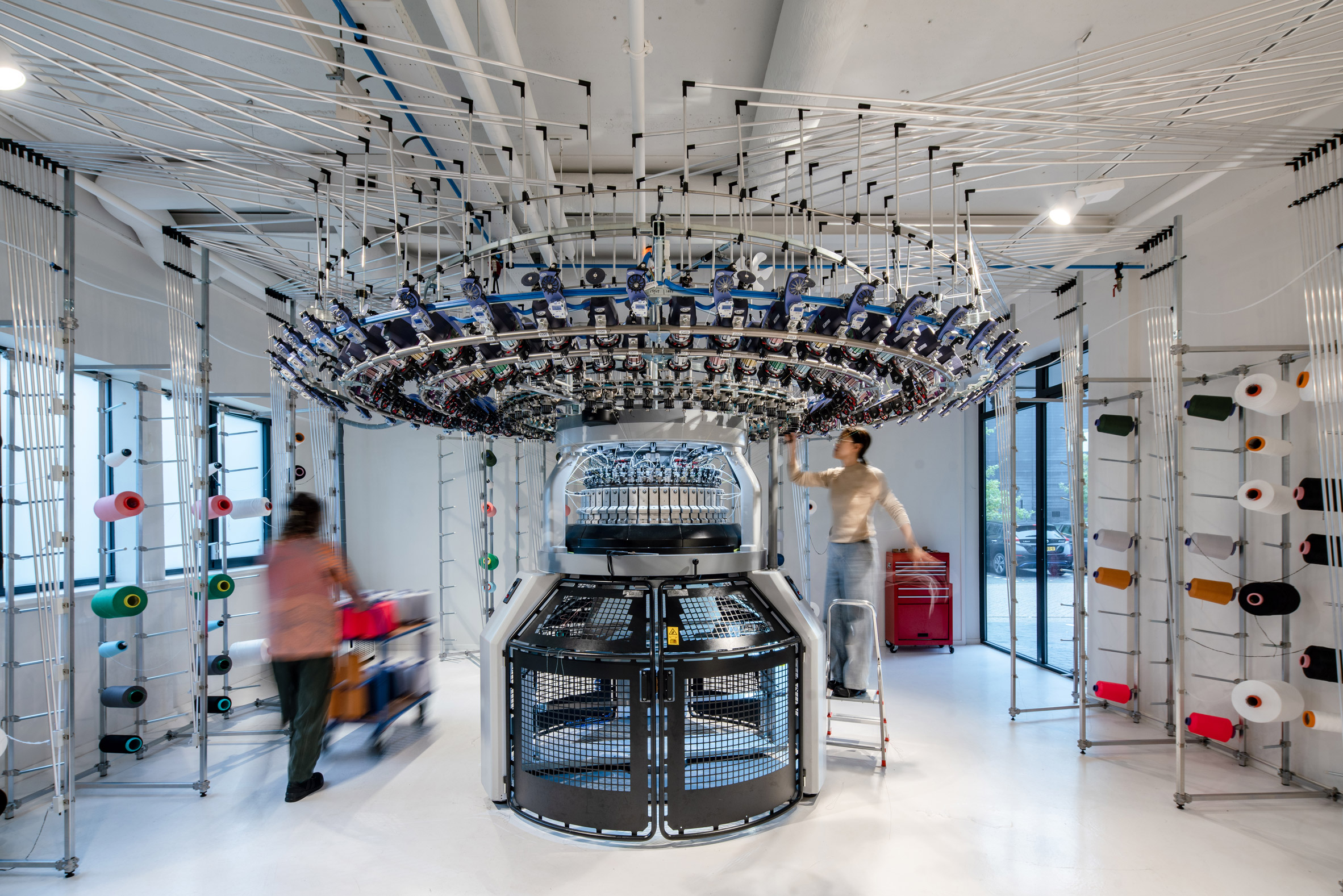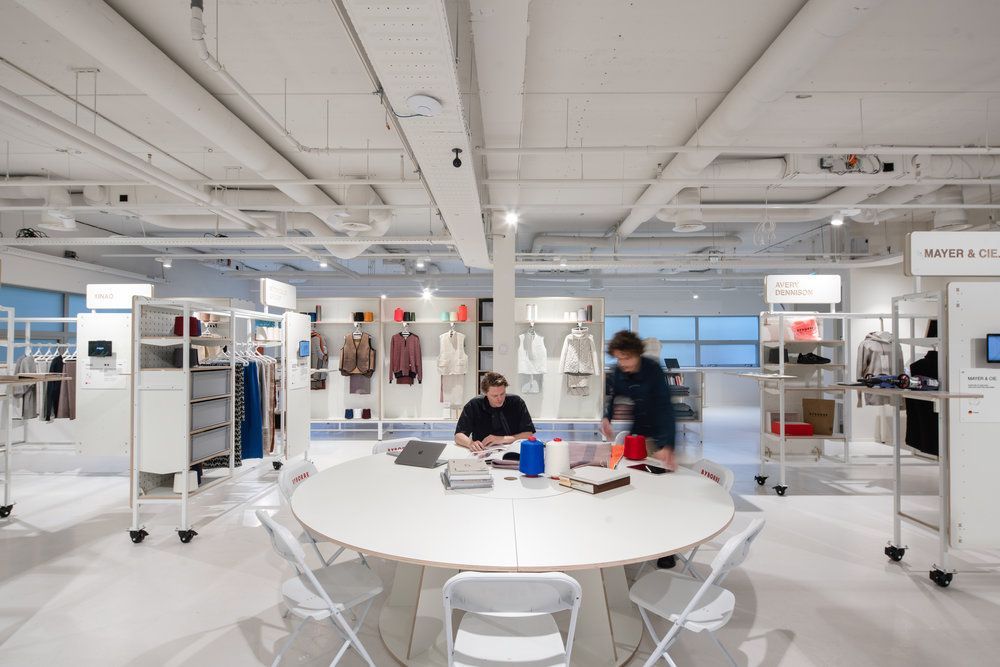A sense that the fashion world was approaching a paradigm shift permeated the event “Digitization the of textile industry”, organized by BYBORRE as part of their Window of Textile Opportunities (WoTO) initiative. The keynote speaker Amber Slooten embodied – or, to word it more appropriately, computed – the upcoming turn. As CEO and Artistic Director of The Fabricant, a digital-only fashion house, Slooten rendered a vision of fashion that is de-coupled from our physical reality.

Such an application of digital technologies to fashion pushes innovation beyond its current incremental state. The orators on the panel discussion represented digitalization that brings about optimization but not yet disruption. Livio Rodari from Santoni talked about machinery automation; Greta Moser from Avery Dennison focused on digital twins for enhanced traceability; Björn Kalenbach from Groz-Beckert highlighted how digital experiences should complement technology; and Troy Nachtigall, professor at Amsterdam University of Applied Sciences, weaved the narrative together by presenting socio-cultural developments complementing digitization.
In discussing digital trends that keep them busy, the panellists pointed at the shift from a disintegrated product to a co-creative process that carries the promise of democratizing the fashion industry. A new business model in which textile and 3D designers split the fee evenly means new opportunities for creators to earn their living. It also increases cooperation in the design process, re-focusing the interaction from the final product onto the process itself.
The cooperation signifies a new ecosystem emerging at the intersection of fashion and the digital; an ecosystem that requires not only a new set of skills and thus job descriptions but also a whole new vocabulary. How many words that constitute the everyday dictionary of digital fashion did not exist a decade ago? Besides positive developments, Moses pointed at digital Darwinism. Without innovating into the digital realm, fashion brands risk becoming irrelevant. The past three years revealed this threat all the more clearly.

The digital acceleration brought by COVID-19 increased the social acceptance and importance of digital clothing. As we spend our lives more and more online, it becomes important to express ourselves equally there as we would in the physical world. The first Metaverse Fashion week, starting in March 2022, advocates for “unifying images across worlds”. If 3D images are so realistic, what is the difference between digital and physical fashion shows? Ask anyone who attended Balenciaga’s 2022 Clones Spring 22 show. Elements of augmented reality – the precursors to digital collections – are already present in fashion e-commerce, their importance projected to increase. To execute the digital shift successfully, as Nachtigall pointed out, education systems have to catch up and adapt, merging the world of “traditional” fashion with digital methods.

As we are adding more and more elements to our digital realities, we approach an embodiment turn. We redefine what bodies mean in relationship to the virtual, and what is the place of fashion within the multidimensionality of life - or lives. The Discord-fuelled community of digital fashion designers advocate for a “cyborgian” switch, a creation of a brand new (e-)human that blends imagination and material reality, “a hybrid of machine and organism”. The line between human and posthuman becomes their daily route to work.
We are the ones being refashioned. The paramount question in the advent of digital fashion concerns existence, or lack thereof. If you cannot experience it with (most of) your senses, does digital fashion really exist? How do you interact with it, how do you touch the fabric? Will digital replace the physical or merely complement it? Perhaps most importantly, can we still tell the difference where one world starts and the other ends?
The traditional view presents digital technologies as enablers rather
than products themselves. To break with the tradition, we need to
realize an identity shift that generations not yet as present in our public
discourse already underwent. Rodari pointed out that Slooten’s digital
transformation is more of a mindset as it requires a change in our thinking
and behaving – but this holds true only for generations that did not grow up with a
smartphone. “Zoomers” are the first generation of digital natives. To them more than
to any generation before, the digital is as real of an identity as a physical one. Creators
need to innovate to account for these, Slooten believes.
The physical world will never disappear as it, ultimately, keeps us on the human side
of the cyborg equation. Humans will always be at the centre of any technological shift,
but the space in which humans feel comfortable has shifted in the last less than two
decades. The spaceship has sailed but we are still on board, wearing glittery and only
sometimes glitchy costumes.

Today, we see the physical and the digital complement each other. Augmented reality helps e-consumers in purchasing physical items. Metaverse Fashion Week offers physical duplicates of digital items while attendants of the Crypto Fashion Week wear digital extras on top of their physical outfits. Millions more people will see digital add-ons via the ubiquity of their smartphones. Social and internet-enhanced media are the e-room where it happens: over 200 million Snapchat users already engage with augmented reality daily, and digital looks are becoming more and more popular on Instagram or gaming platforms. For example, Fortnite gamers regard skins as covetable trophies. Kalenbach is correct that Slooten’s vision will not put him, and many others in traditional fashion industries, out of business, as the two fashion worlds will - and already do - co-exist.
The disruption inherently weaved into digital fashion stems from the mismatch between our laws and cultural perceptions versus the new virtual reality. When a digital artist created (and sold for a handsome sum) Birkins bags as NFTs, Hermès issued a statement calling the NFT a fake in the metaverse. Yet, no legal action against the artist or the digital brand followed, showing that the ability to control digital creators is severely limited. For better or worse.
Legal limitations extend to data collection, which is a main point of concern with digital fashion. Amber Slooten’s dream can turn into Shoshana Zuboff’s nightmare. European experts highlight that for livestreamed and digital events, the access to first- party data will be crucial in moving forward in terms of monetizing. The organizers of Taiwanese fashion week amplify this voice, highlighting that the legal environment – meaning, GDPR – is the biggest obstacle to livestreaming fashion shows in the West. According to the organizers, collecting big data is required to see “the bigger picture” and improve operational details. The dangers of unsupervised data collection within the business model of surveillance capitalism, as well as the legislative inability to curb monstrous data-gatherers, are crystal clear today. The question of trading ever-more, ever-more- personal information for digital fashion is a burning one. Especially if one considers that digital creators are forced to work with centralized tech players, at least at first, to realize their decentralized fashion dream.

So what comes next for digital fashion? The pioneers of the Metaverse have a responsibility to ensure that their vision and its subsequent human evolution improves humanity. Many people are not yet ready to jump on the virtual wagon, so digital creators have the opportunity to show the world a future in which want to live. At the same time, it is crucial to keep an open – and critical - mind as the change progresses, and to never stop asking the next question. Pioneers need to know when their innovation goes too far and correct for it with the good of humanity in mind. Nobody puts it better than Katherine Hayles: “If my nightmare is a culture inhabited by posthumans who regard their bodies as fashion accessories rather than the ground of being, my dream is a version of the posthuman that embraces the possibilities of information technologies without being seduced by fantasies of unlimited power and disembodied immortality, that recognizes and celebrates finitude as a condition of human being, and that understands human life is embedded in a material world of great complexity, one on which we depend for our continued survival.”
All images courtesy byborre.com
byborre.com/woto
Reflectilon by www.zuzanazaruk.com